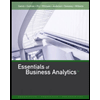
PERSONAL FINANCE,TAX UPDATE (LL)
13th Edition
ISBN: 9780357438855
Author: GARMAN
Publisher: CENGAGE L
expand_more
expand_more
format_list_bulleted
Concept explainers
Question
Chapter 2, Problem 6AIP
Summary Introduction
To select: Different lifestyle trade-offs.
Introduction: Lifestyle trade-offs show the different social and cultural preferences of the individuals that may have an impact when choosing the career paths. It may be a new job opportunity, a job transfer or may even a career promotion, the employees may consider their lifestyle trade-offs prior accepting the offer.
Expert Solution & Answer
Want to see the full answer?
Check out a sample textbook solution
Students have asked these similar questions
This is for finance expert.
If the car coast $28,000 and the interest rate is 8% and the term of payment is 6 years. How much would it cost you to pay for the car?
43
-ACC-121-71: CH 04 HW-X
Question 7 - CH 04 HW - Exercise X
ezto.mheducation.com/ext/map/index.html?_con=con&external_browser=0&launchUrl=https%253A%252F%252Fconnect.mheducation.com%252Fcon
vo Support L Lenovo McAfee
Dashboard | Piedm...
Information System...
My Shelf | Brytewav...
My Shelf | Bryteway...
Exercises & Problems
Saved
Help
Sa
Scribners Corporation produces fine papers in three production departments-Pulping, Drying, and Finishing. In the Pulping
Department, raw materials such as wood fiber and rag cotton are mechanically and chemically treated to separate their fibers. The
result is a thick slurry of fibers. In the Drying Department, the wet fibers transferred from the Pulping Department are laid down on
porous webs, pressed to remove excess liquid, and dried in ovens. In the Finishing Department, the dried paper is coated, cut, and
spooled onto reels. The company uses the weighted-average method in its process costing system. Data for March for the Drying
Department…
Chapter 2 Solutions
PERSONAL FINANCE,TAX UPDATE (LL)
Ch. 2.1 - Prob. 1CCCh. 2.1 - Prob. 2CCCh. 2.1 - Prob. 3CCCh. 2.1 - Prob. 4CCCh. 2.2 - Is college worth the cost? Why or why not?Ch. 2.2 - Prob. 2CCCh. 2.2 - Prob. 3CCCh. 2.3 - Prob. 1CCCh. 2.3 - Give examples of how to identify specific job...Ch. 2.3 - Prob. 3CC
Ch. 2.3 - Explain how to compare salary and living costs in...Ch. 2.3 - Prob. 5CCCh. 2 - Economic Trade-off of Graduate School. Jessica...Ch. 2 - Prob. 2DTMCh. 2 - Prob. 3DTMCh. 2 - Prob. 4DTMCh. 2 - Prob. 1FPCCh. 2 - Prob. 2FPCCh. 2 - Prob. 3FPCCh. 2 - Prob. 4FPCCh. 2 - Prob. 5FPCCh. 2 - Cover Letter. Review Figure 2-6 on page 59 and...Ch. 2 - Prob. 6AIP
Knowledge Booster
Learn more about
Need a deep-dive on the concept behind this application? Look no further. Learn more about this topic, finance and related others by exploring similar questions and additional content below.Similar questions
- With the growing popularity of casual surf print clothing, two recent MBA graduates decided to broaden this casual surf concept to encompass a "surf lifestyle for the home." With limited capital, they decided to focus on surf print table and floor lamps to accent people's homes. They projected unit sales of these lamps to be 7,600 in the first year, with growth of 5 percent each year for the next five years. Production of these lamps will require $41,000 in net working capital to start. The net working capital will be recovered at the end of the project. Total fixed costs are $101,000 per year, variable production costs are $25 per unit, and the units are priced at $52 each. The equipment needed to begin production will cost $181,000. The equipment will be depreciated using the straight-line method over a five-year life and is not expected to have a salvage value. The effective tax rate is 21 percent and the required rate of return is 23 percent. What is the NPV of this project? Note:…arrow_forwardForest Enterprises, Incorporated, has been considering the purchase of a new manufacturing facility for $290,000. The facility is to be fully depreciated on a straight-line basis over seven years. It is expected to have no resale value after the seven years. Operating revenues from the facility are expected to be $125,000, in nominal terms, at the end of the first year. The revenues are expected to increase at the inflation rate of 2 percent. Production costs at the end of the first year will be $50,000, in nominal terms, and they are expected to increase at 3 percent per year. The real discount rate is 5 percent. The corporate tax rate is 25 percent. Calculate the NPV of the project. Note: Do not round intermediate calculations and round your answer to 2 decimal places, e.g., 32.16. NPVarrow_forwardHelp with questionsarrow_forward
- Please help with questionsarrow_forwardCreate financial forecasting years 2022, 2023, and 2024 using this balance sheet.arrow_forwardBeta Company Ltd issued 10% perpetual debt of Rs. 1,00,000. The company's tax rate is 50%. Determine the cost of capital (before tax as well as after tax) assuming the debt is issued at 10 percent premium. helparrow_forward
arrow_back_ios
SEE MORE QUESTIONS
arrow_forward_ios
Recommended textbooks for you
- Principles of Accounting Volume 1AccountingISBN:9781947172685Author:OpenStaxPublisher:OpenStax College
 Pfin (with Mindtap, 1 Term Printed Access Card) (...FinanceISBN:9780357033609Author:Randall Billingsley, Lawrence J. Gitman, Michael D. JoehnkPublisher:Cengage Learning
Pfin (with Mindtap, 1 Term Printed Access Card) (...FinanceISBN:9780357033609Author:Randall Billingsley, Lawrence J. Gitman, Michael D. JoehnkPublisher:Cengage Learning - Century 21 Accounting Multicolumn JournalAccountingISBN:9781337679503Author:GilbertsonPublisher:Cengage
 Essentials of Business Analytics (MindTap Course ...StatisticsISBN:9781305627734Author:Jeffrey D. Camm, James J. Cochran, Michael J. Fry, Jeffrey W. Ohlmann, David R. AndersonPublisher:Cengage Learning
Essentials of Business Analytics (MindTap Course ...StatisticsISBN:9781305627734Author:Jeffrey D. Camm, James J. Cochran, Michael J. Fry, Jeffrey W. Ohlmann, David R. AndersonPublisher:Cengage Learning


Principles of Accounting Volume 1
Accounting
ISBN:9781947172685
Author:OpenStax
Publisher:OpenStax College

Pfin (with Mindtap, 1 Term Printed Access Card) (...
Finance
ISBN:9780357033609
Author:Randall Billingsley, Lawrence J. Gitman, Michael D. Joehnk
Publisher:Cengage Learning

Century 21 Accounting Multicolumn Journal
Accounting
ISBN:9781337679503
Author:Gilbertson
Publisher:Cengage


Essentials of Business Analytics (MindTap Course ...
Statistics
ISBN:9781305627734
Author:Jeffrey D. Camm, James J. Cochran, Michael J. Fry, Jeffrey W. Ohlmann, David R. Anderson
Publisher:Cengage Learning